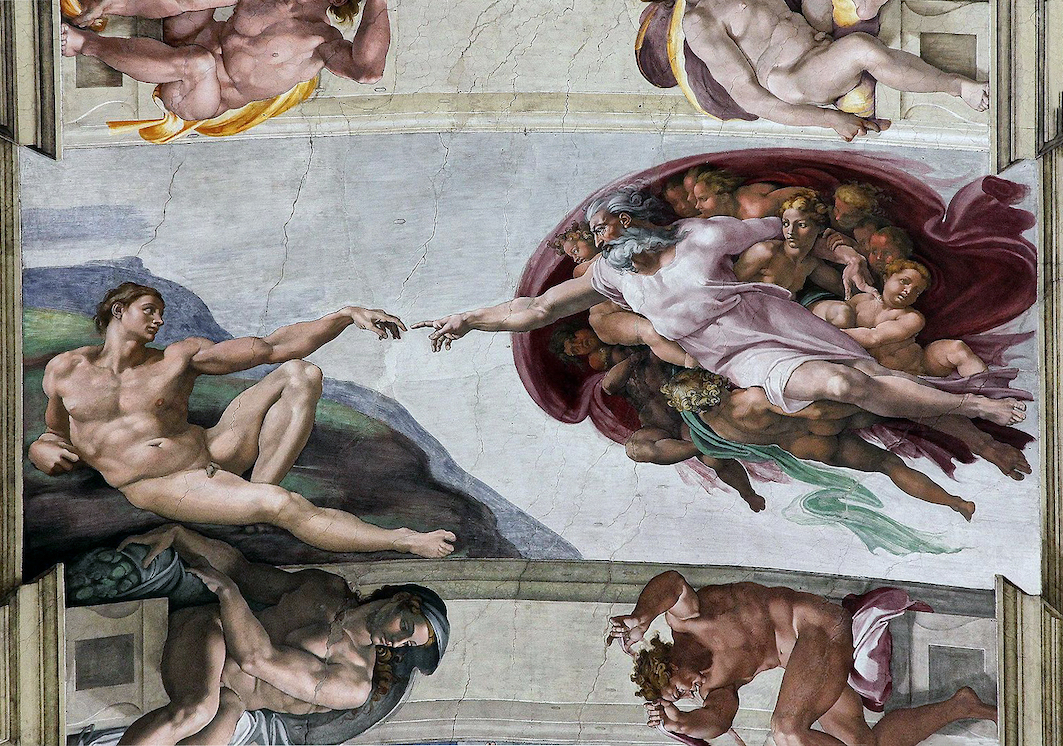The Vatican City, the spiritual and administrative center of the Roman Catholic Church, is home to some of the world’s most renowned artworks, housed within the Vatican Museums. These masterpieces span centuries of artistic achievement and reflect the rich cultural heritage of Christianity. Here, we explore some of the greatest artworks found in the Vatican:
Michelangelo’s Sistine Chapel Ceiling:
Arguably the most famous artwork in the Vatican, Michelangelo’s breathtaking ceiling frescoes in the Sistine Chapel are a testament to his unparalleled artistic genius. Completed between 1508 and 1512, the ceiling depicts scenes from the Book of Genesis, including the iconic “Creation of Adam” where God breathes life into Adam. The ceiling’s intricate details, vibrant colors, and dynamic compositions continue to awe visitors from around the world.
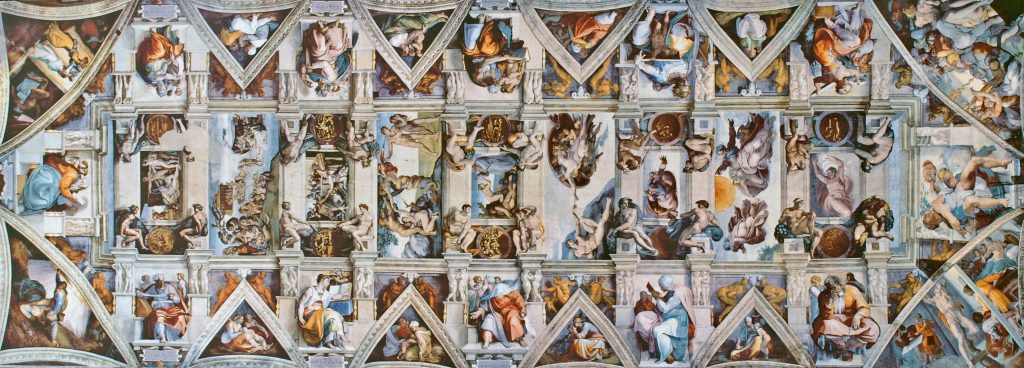
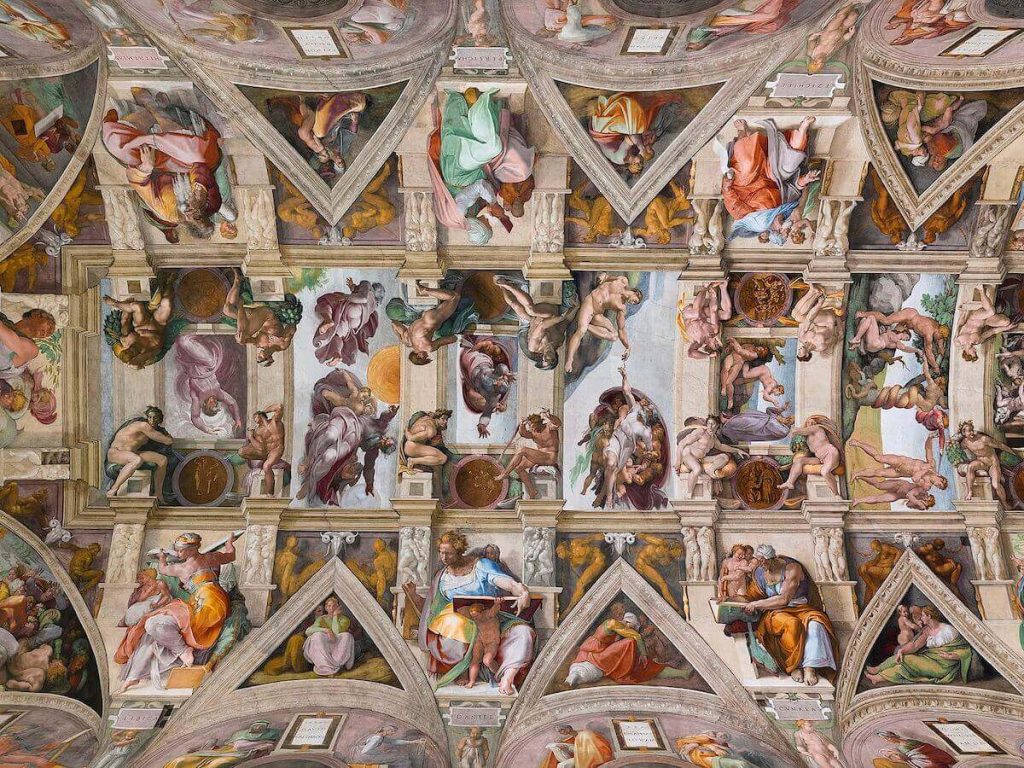
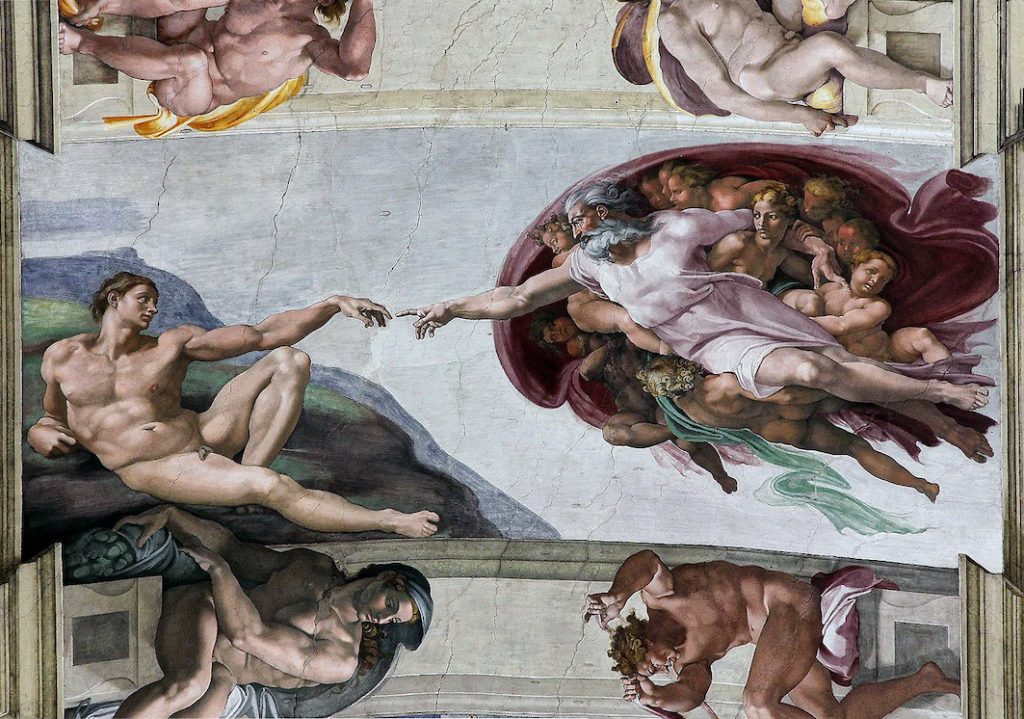
The Sistine Chapel Ceiling, adorned with the breathtaking frescoes by Michelangelo Buonarroti, stands as one of the most iconic and revered artistic achievements in history. Located within the Vatican City, the spiritual heart of the Roman Catholic Church, this magnificent masterpiece has captivated visitors for centuries with its beauty, complexity, and profound symbolism.
Commissioned by Pope Julius II in 1508, Michelangelo embarked on the monumental task of decorating the ceiling of the Sistine Chapel, a project that would consume him for four grueling years. The result of his labor is a stunning visual narrative that spans over 5,000 square feet and comprises nine central panels depicting scenes from the Book of Genesis, along with numerous ornate architectural elements and decorative motifs.
At the center of the ceiling, Michelangelo’s iconic depiction of the “Creation of Adam” has become one of the most recognizable images in art history. This iconic fresco portrays the moment when God, depicted as a majestic figure enveloped in billowing robes, reaches out to impart the spark of life to Adam, the first man. The powerful imagery of outstretched hands, poised on the brink of touching, conveys the divine act of creation with unparalleled emotional resonance.
Surrounding the central narrative are a series of intricately painted panels depicting various biblical stories, including the creation of Eve, the temptation and fall of Adam and Eve, and the Great Flood. Each scene is rendered with exquisite detail and dynamic composition, showcasing Michelangelo’s mastery of form, perspective, and anatomical accuracy.
In addition to the narrative panels, Michelangelo adorned the ceiling with a rich array of decorative elements, including ornate architectural frames, intricate drapery, and a host of cherubs, prophets, and sibyls. The ceiling’s design reflects Michelangelo’s deep understanding of classical architecture and his innovative approach to spatial composition, creating a harmonious and visually dynamic ensemble that envelops the viewer in a transcendent experience.
Despite the physical and artistic challenges he faced, including working in an uncomfortable position high above the chapel floor and mastering the complex technique of fresco painting, Michelangelo persevered and ultimately created a masterpiece that has stood the test of time. The Sistine Chapel Ceiling remains an enduring testament to the genius of one of history’s greatest artists and continues to inspire awe and admiration in all who behold it.
Raphael’s Stanze di Raffaello (Raphael Rooms):
Commissioned by Pope Julius II, the Raphael Rooms are a series of four interconnected chambers in the Vatican Palace adorned with frescoes by the renowned Renaissance artist Raphael and his workshop. The most famous of these is the “School of Athens” located in the Stanza della Segnatura, which features a gathering of ancient philosophers and thinkers, including Plato and Aristotle, in a grand architectural setting.
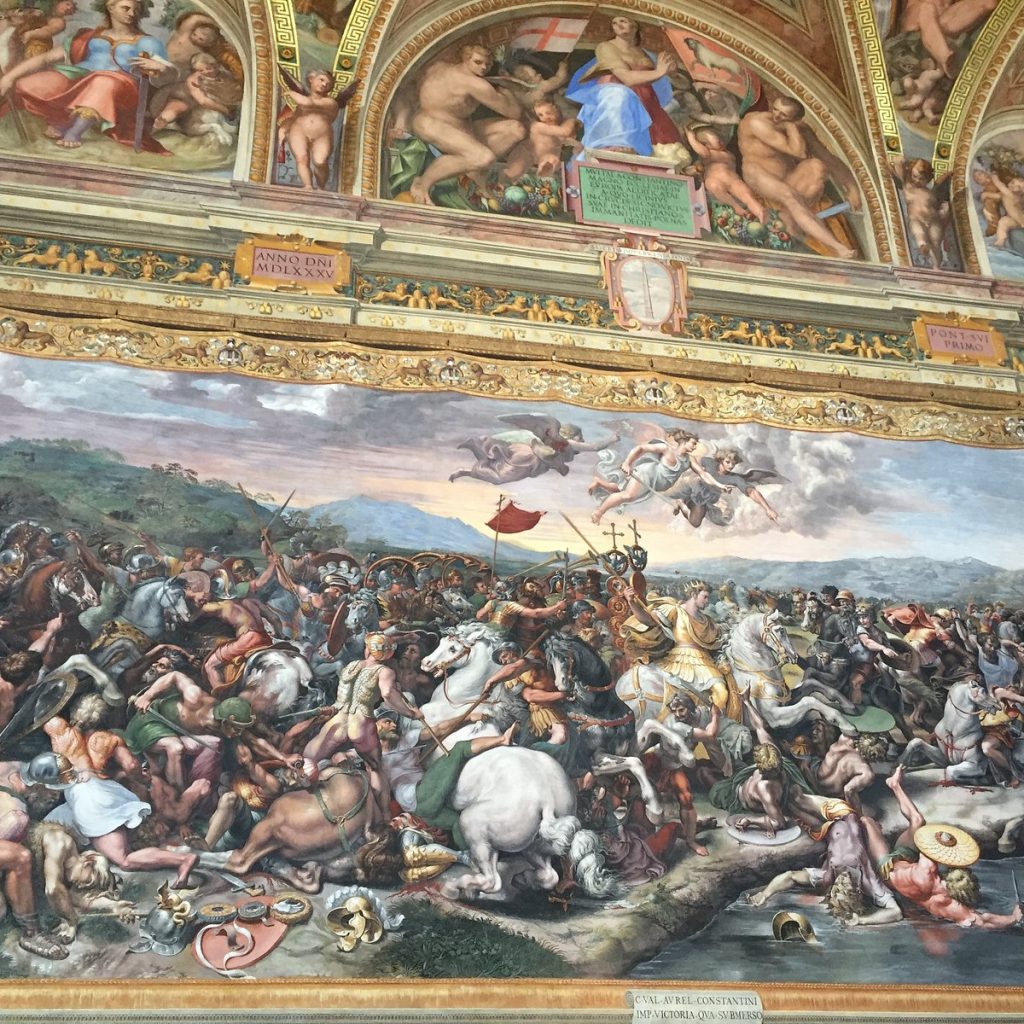
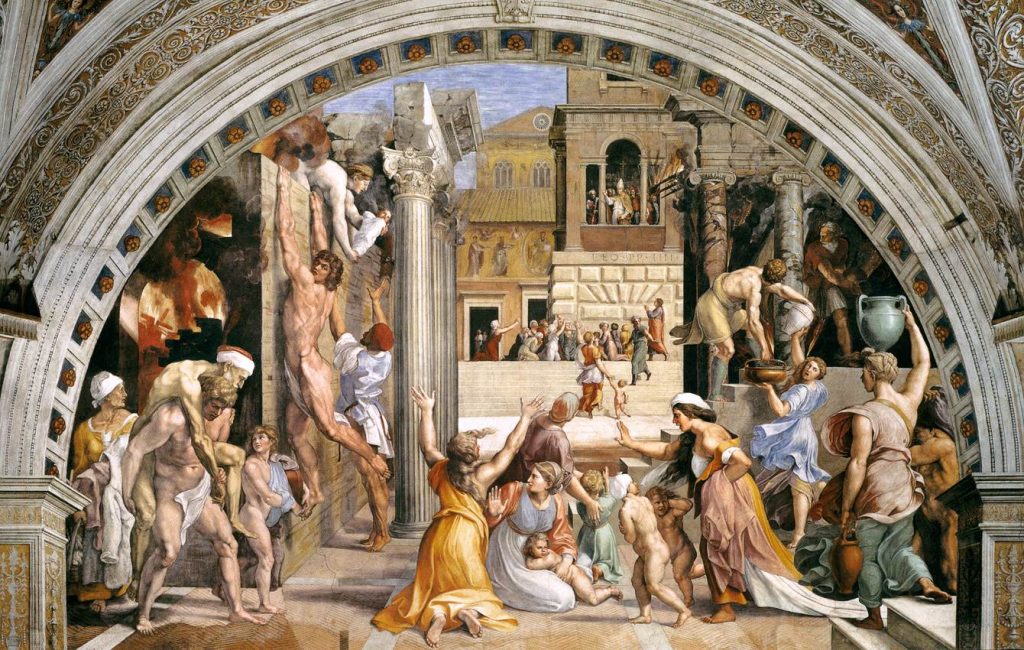
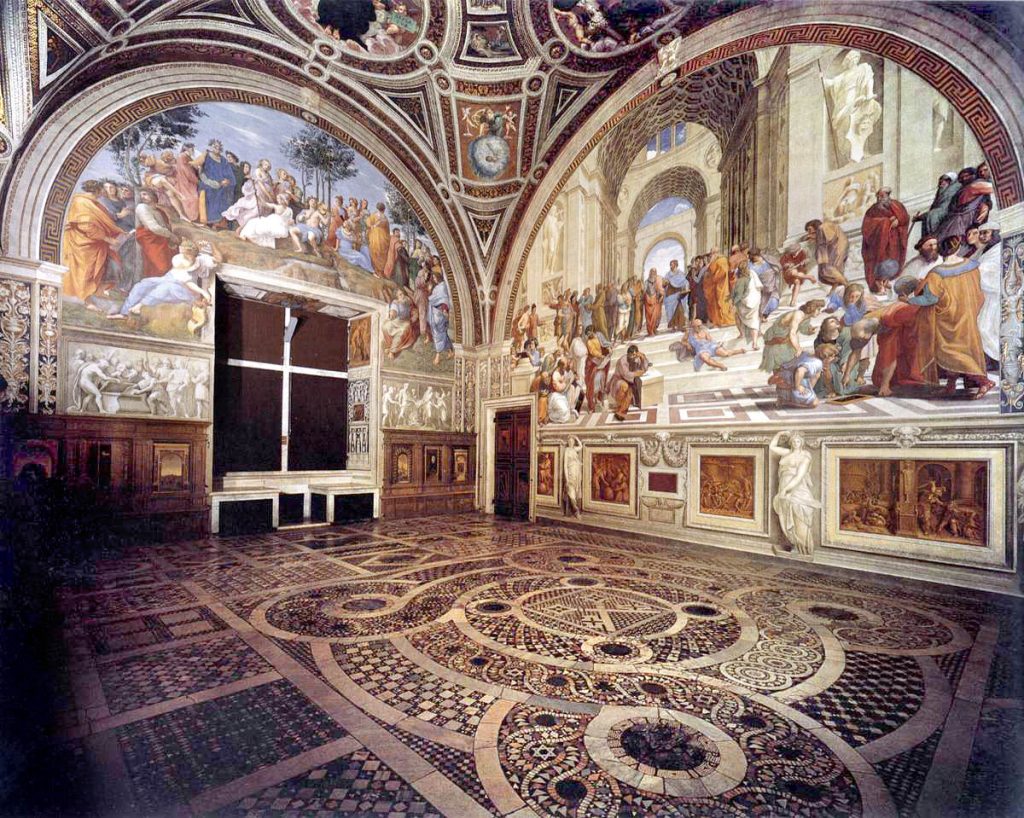
Nestled within the Apostolic Palace of the Vatican City lies one of the most exquisite treasures of the Renaissance era – the Stanze di Raffaello, or Raphael Rooms. These lavishly decorated chambers, painted by the esteemed Italian artist Raphael and his talented workshop, stand as a testament to the pinnacle of artistic achievement during the High Renaissance period.
Commissioned by Pope Julius II in the early 16th century, the Raphael Rooms served as the private apartments of the pontiff, intended to showcase the grandeur and magnificence of the papal court. Raphael was tasked with transforming the modest chambers into sumptuous spaces adorned with frescoes that would elevate the spiritual and cultural ambiance of the papal residence.
The four rooms that comprise the Raphael Rooms – the Stanza della Segnatura, Stanza di Eliodoro, Stanza dell’Incendio del Borgo, and Stanza di Constantino – each feature a distinctive theme and a series of breathtaking frescoes that reflect Raphael’s unparalleled skill and artistic vision.
The Stanza della Segnatura, considered the masterpiece of the Raphael Rooms, is adorned with a stunning array of frescoes that celebrate the realms of theology, philosophy, law, and poetry. The centerpiece of this room is the iconic “School of Athens,” a monumental composition that pays homage to the great philosophers of antiquity and epitomizes the harmony and balance of the Renaissance aesthetic.
In the Stanza di Eliodoro, Raphael depicted scenes from the Old Testament, including the miraculous intervention of God in the expulsion of Heliodorus from the Temple and the liberation of Saint Peter from prison by an angel. These dramatic frescoes serve as a testament to the divine power and providence of God, reinforcing the spiritual authority of the papacy.
The Stanza dell’Incendio del Borgo commemorates the legendary intervention of Pope Leo IV in extinguishing a fire that threatened the Borgo district of Rome. Raphael’s frescoes in this room depict the miraculous event and celebrate the heroic deeds of the pontiff, imbuing the space with a sense of divine protection and providence.
Finally, the Stanza di Constantino pays homage to the early Christian history of Rome, portraying the miraculous conversion of the Roman Emperor Constantine and the Battle of Milvian Bridge. These majestic frescoes serve as a testament to the triumph of Christianity and the spiritual legacy of the papacy.
Together, the Raphael Rooms represent a triumph of artistic achievement and cultural expression, showcasing the unparalleled talent and vision of Raphael and his workshop. These magnificent frescoes continue to inspire awe and admiration in visitors from around the world, offering a glimpse into the splendor and grandeur of the Renaissance era.
The Pieta by Michelangelo:
Located in St. Peter’s Basilica, Michelangelo’s “Pieta” is a marble sculpture depicting the Virgin Mary cradling the lifeless body of Jesus Christ after the Crucifixion. Carved from a single block of Carrara marble, the sculpture is a masterpiece of Renaissance art, renowned for its emotional intensity, delicate drapery, and exquisite detail.

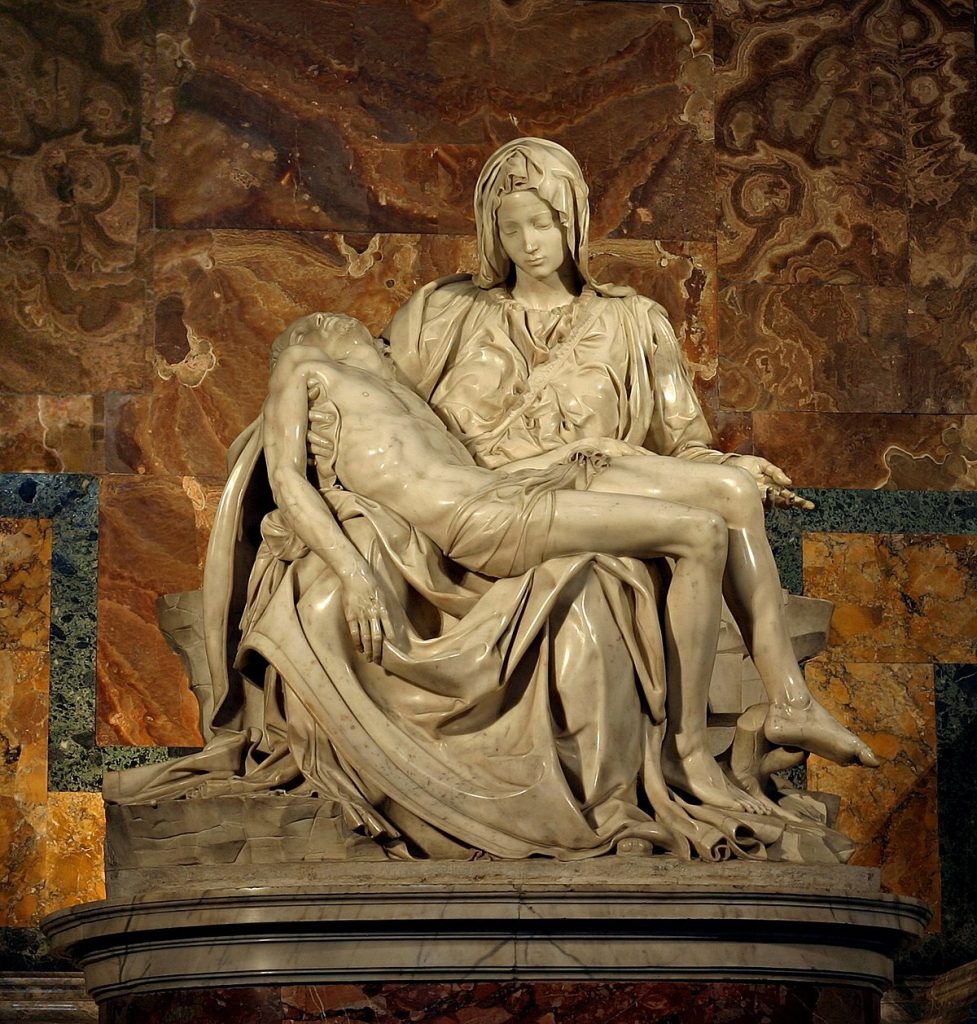
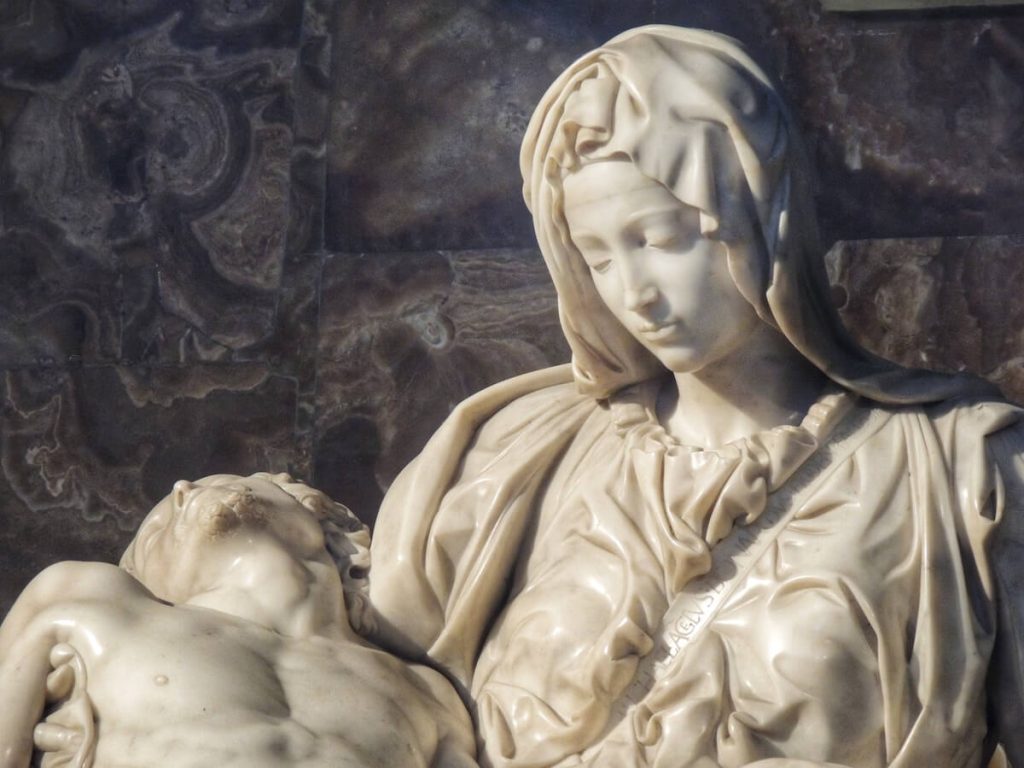
The Pieta, a sublime masterpiece sculpted by the renowned Renaissance artist Michelangelo Buonarroti, stands as a testament to the pinnacle of artistic achievement and spiritual expression. Created between 1498 and 1499, this iconic work of art captures the poignant moment of Mary cradling the lifeless body of her son, Jesus Christ, after his crucifixion.
Commissioned by the French cardinal Jean de Billheres as a funerary monument for his tomb in St. Peter’s Basilica in Vatican City, Michelangelo’s Pieta immediately captivates viewers with its unparalleled beauty and emotional resonance. Carved from a single block of flawless Carrara marble, the sculpture exudes a sense of grace, serenity, and divine compassion that transcends time and space.
The Pieta is a study in contrasts, juxtaposing the youthful, idealized figure of Christ with the mature, sorrowful visage of his mother Mary. Michelangelo’s meticulous attention to detail, from the intricate folds of the garments to the delicate contours of the figures’ faces, imbues the sculpture with a sense of lifelike realism and emotional depth.
One of the most striking aspects of the Pieta is its composition, which achieves a perfect balance and harmony between the figures. Mary’s gentle embrace of her son’s body exudes tenderness and compassion, while Christ’s limp form conveys a profound sense of resignation and sacrifice. The interplay of light and shadow further enhances the dramatic effect of the sculpture, casting Mary and Christ in a timeless aura of divine radiance.
Beyond its aesthetic beauty, the Pieta also serves as a powerful symbol of faith, redemption, and the enduring bond between mother and child. Michelangelo’s masterpiece invites viewers to contemplate the mysteries of life, death, and salvation, inviting them to find solace and inspiration in the transcendent power of love and compassion.
Throughout the centuries, the Pieta has inspired countless artists, scholars, and pilgrims, drawing admirers from around the world to marvel at its sublime beauty and spiritual resonance. Today, it remains one of the most revered and iconic works of art in the history of Western civilization, a testament to the enduring legacy of Michelangelo and the timeless power of artistic expression.
The Last Judgment by Michelangelo:
Another monumental work by Michelangelo, the Last Judgment fresco adorns the altar wall of the Sistine Chapel. Painted between 1536 and 1541, the fresco depicts the Second Coming of Christ and the final judgment of humanity. Michelangelo’s dramatic portrayal of heaven, hell, and the resurrection remains one of the most powerful and influential artworks in Western art history.
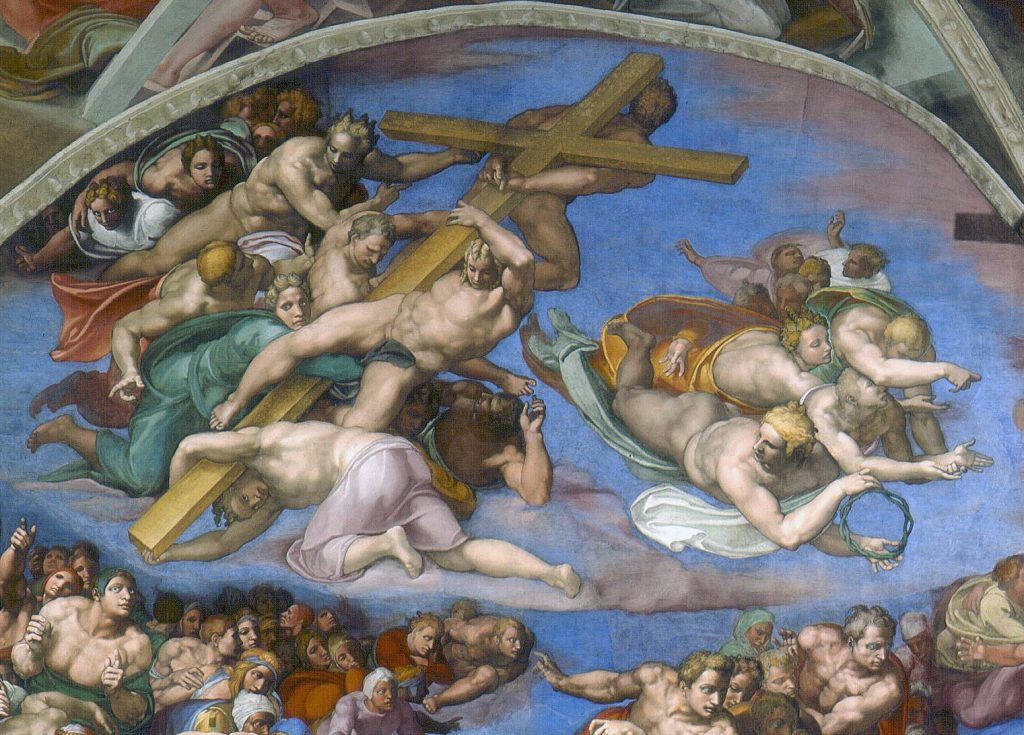
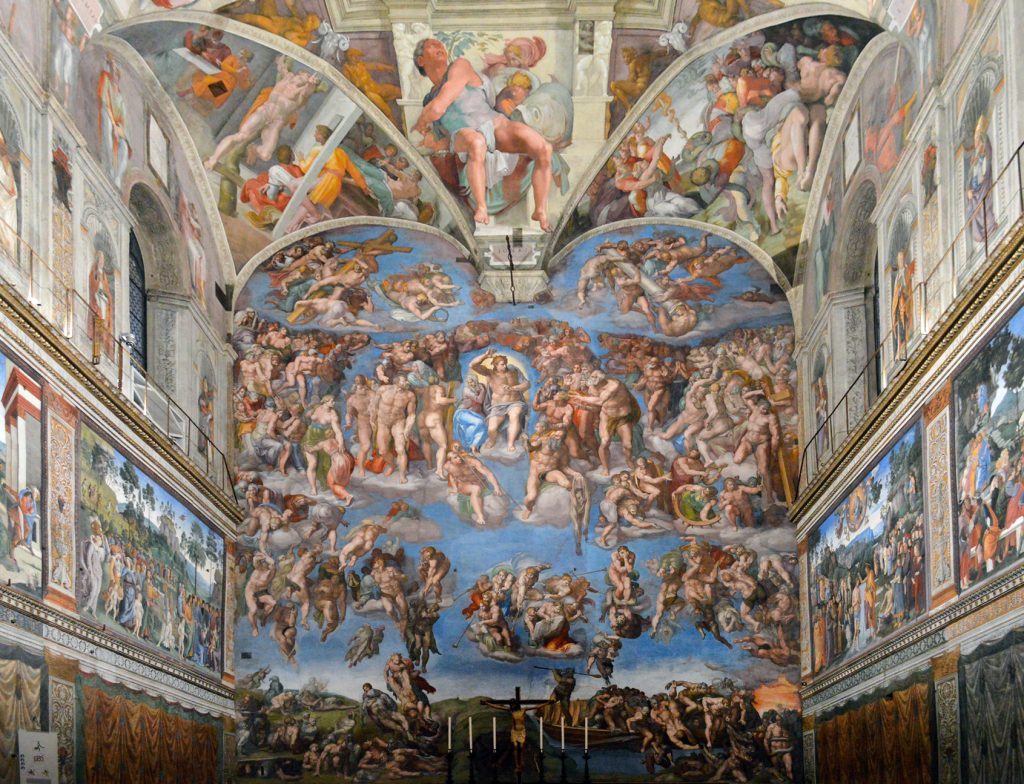
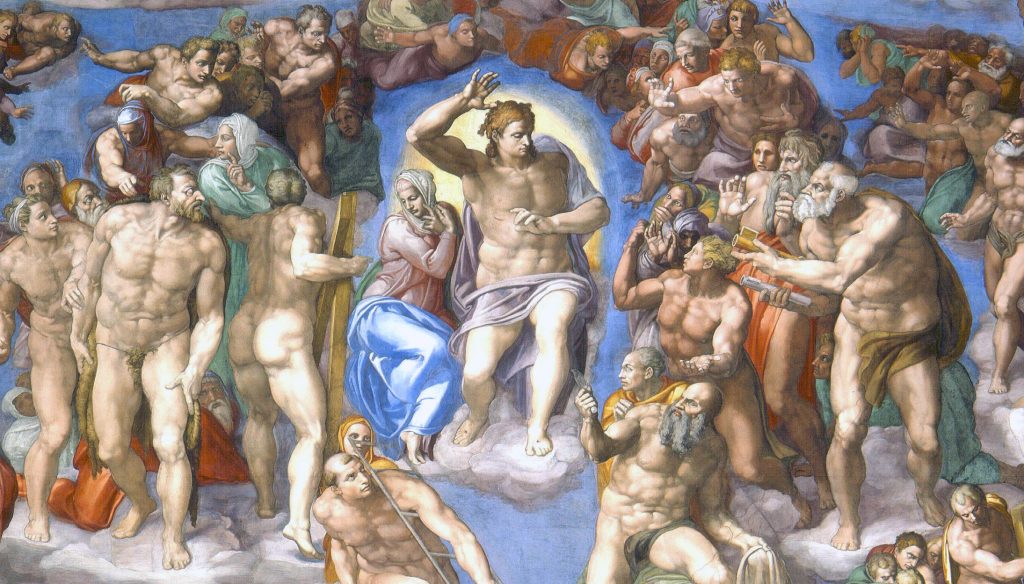
The Last Judgment, an awe-inspiring fresco adorning the altar wall of the Sistine Chapel in Vatican City, stands as one of the crowning achievements of Renaissance art and a testament to the boundless creativity and spiritual fervor of its creator, Michelangelo Buonarroti. Painted between 1536 and 1541, this monumental work of art depicts the dramatic scene of Christ’s second coming and the final judgment of humanity, capturing the profound theological and existential themes of redemption, salvation, and divine justice.
Commissioned by Pope Clement VII and later completed under Pope Paul III, The Last Judgment occupies a central place in the iconography of Christian art, offering a vivid portrayal of the biblical narrative found in the Book of Revelation. Spanning over 1,000 square meters, the fresco unfolds as a sprawling tableau of dynamic figures, celestial beings, and tormented souls, rendered with Michelangelo’s characteristic blend of anatomical precision, emotional intensity, and spiritual grandeur.
At the heart of The Last Judgment stands the towering figure of Christ, depicted in a commanding pose with his right hand raised in a gesture of judgment and his left hand extended in a gesture of mercy. Surrounding him are the ranks of angels, saints, and apostles, each depicted with distinctive gestures and expressions that convey their role in the divine drama unfolding before them.
Below Christ, the souls of the dead rise from their graves and ascend to heaven or descend to hell, their bodies contorted in agony or exalted in ecstasy, depending on their deeds in life. Michelangelo’s masterful use of foreshortening and perspective creates a sense of depth and movement, drawing the viewer into the swirling vortex of divine judgment and eternal salvation.
The Last Judgment is not merely a static tableau but a dynamic narrative that unfolds across the entire wall of the Sistine Chapel, inviting viewers to contemplate the complexities of human existence, the inevitability of death, and the hope of redemption. Through his bold and innovative approach to composition, Michelangelo transforms the sacred space of the Sistine Chapel into a transcendent realm where heaven and earth, the temporal and the eternal, converge in a symphony of color, form, and emotion.
Despite its initial controversy and criticism, The Last Judgment has endured as one of the most celebrated and iconic works of art in Western civilization, inspiring generations of artists, scholars, and pilgrims with its profound spiritual depth and artistic brilliance. Today, it continues to captivate and provoke viewers with its timeless message of divine judgment and the enduring power of faith.
The Transfiguration by Raphael:
Completed shortly before Raphael’s death in 1520, “The Transfiguration” is considered one of the artist’s masterpieces and is housed in the Vatican Museums. The altarpiece depicts the Transfiguration of Jesus on Mount Tabor, with radiant light emanating from the figure of Christ. The composition’s dynamic interplay of light and shadow, along with its emotional intensity, showcases Raphael’s mastery of the High Renaissance style.
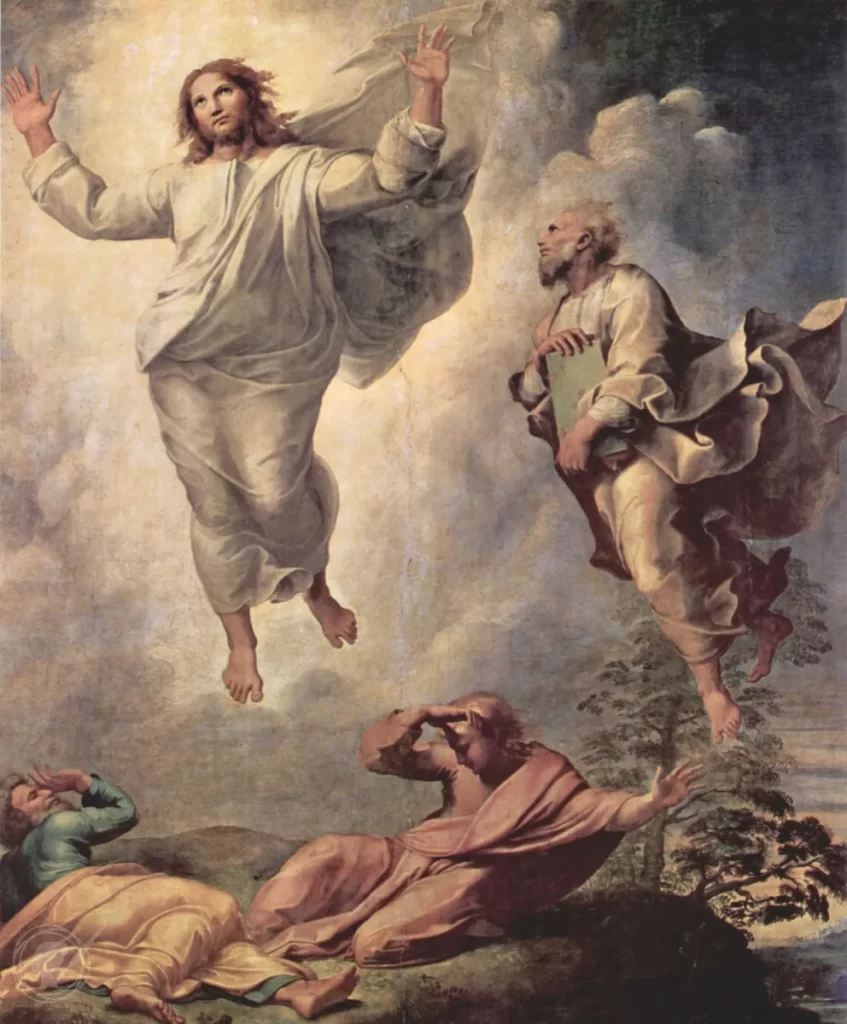
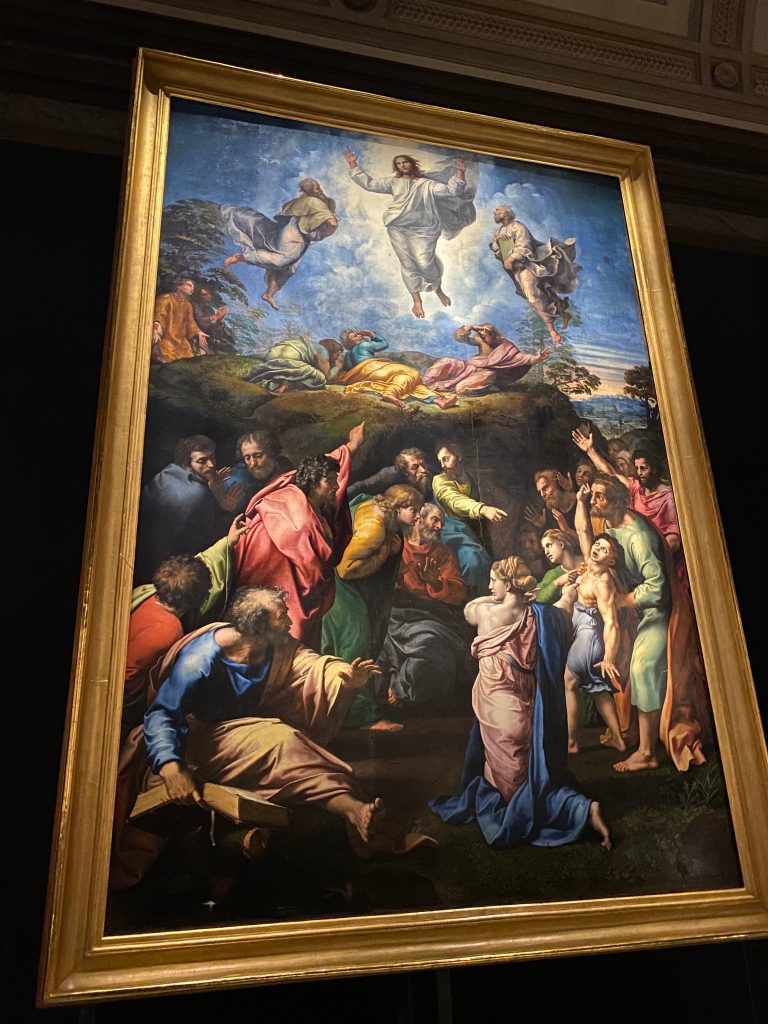
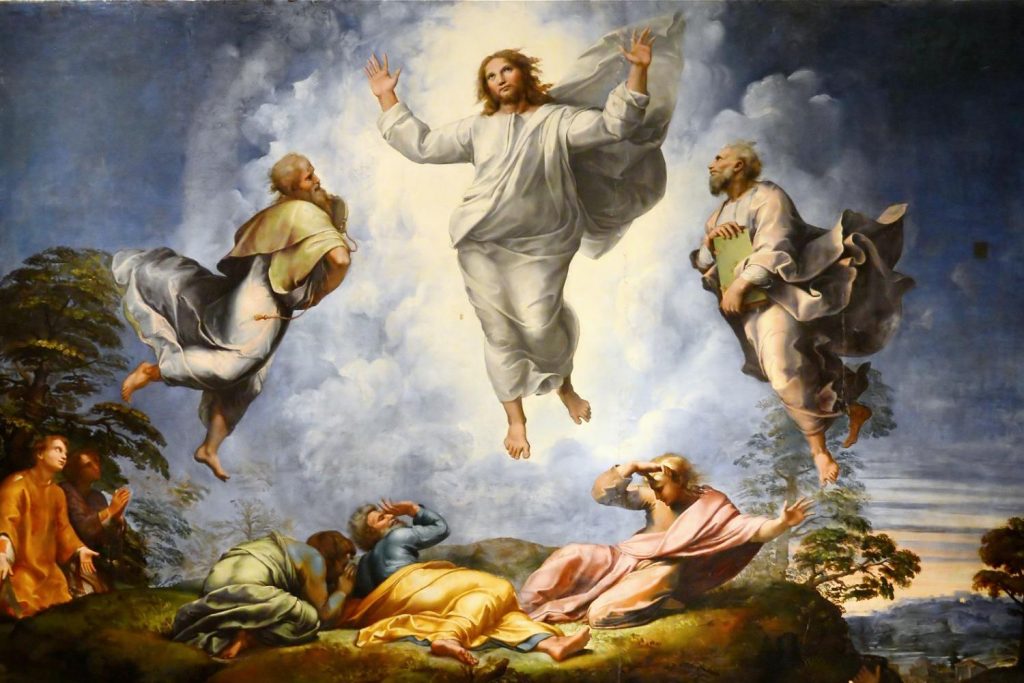
The Transfiguration, painted by the Italian Renaissance artist Raphael between 1516 and 1520, stands as one of the crowning achievements of Western art. Located in the Vatican Museums in Vatican City, this monumental masterpiece is revered for its exquisite beauty, profound spirituality, and masterful composition, showcasing Raphael’s exceptional talent and visionary genius.
Commissioned by Cardinal Giulio de’ Medici as an altarpiece for the Cathedral of San Giusto in Narbonne, France, The Transfiguration depicts the biblical episode of the Transfiguration of Jesus Christ, as recounted in the Gospels of Matthew, Mark, and Luke. According to the narrative, Jesus ascends a mountain with three of his disciples, Peter, James, and John, where he is transfigured before them, his face shining like the sun, and his garments becoming dazzling white. Alongside Jesus appear the figures of Moses and Elijah, representing the Law and the Prophets, who converse with him about his impending crucifixion and resurrection.
Raphael’s composition is divided into two distinct scenes, with the Transfiguration of Christ depicted in the upper register and the dramatic episode of the possessed boy and the disciples below. The upper portion of the painting radiates with divine light and celestial splendor, as Jesus hovers above the mountain, surrounded by a luminous cloud and flanked by Moses and Elijah. The radiant figures of Peter, James, and John kneel in awe below, their faces illuminated by the transcendent glory of the transfigured Christ.
In contrast, the lower register of the painting is filled with intense emotion and dynamic movement, as the disciples struggle to heal the possessed boy in the midst of a chaotic crowd. The anguished expressions of the figures, the swirling drapery, and the dramatic gestures convey the urgency and desperation of the scene, contrasting sharply with the serene tranquility of the Transfiguration above.
Raphael’s mastery of composition, color, and form is evident throughout The Transfiguration, as he seamlessly integrates the two narrative elements into a harmonious whole. The balance between light and shadow, the rhythm of gesture and expression, and the meticulous attention to detail all contribute to the painting’s extraordinary beauty and emotional impact.
The Transfiguration is not merely a religious icon but a profound meditation on the mystery of divine revelation and the transformative power of faith. Through his transcendent vision and artistic skill, Raphael invites viewers to contemplate the eternal truths embodied in the biblical narrative and to experience the awe-inspiring beauty of the divine presence.
Today, The Transfiguration continues to inspire and captivate audiences with its timeless message of spiritual enlightenment and transcendent glory. As one of the greatest masterpieces of the Italian Renaissance, it stands as a testament to the enduring power of art to elevate the soul and illuminate the human spirit.
These are just a few examples of the countless treasures found within the Vatican City, each reflecting the enduring legacy of artistic excellence and spiritual devotion that has defined this sacred site for centuries.
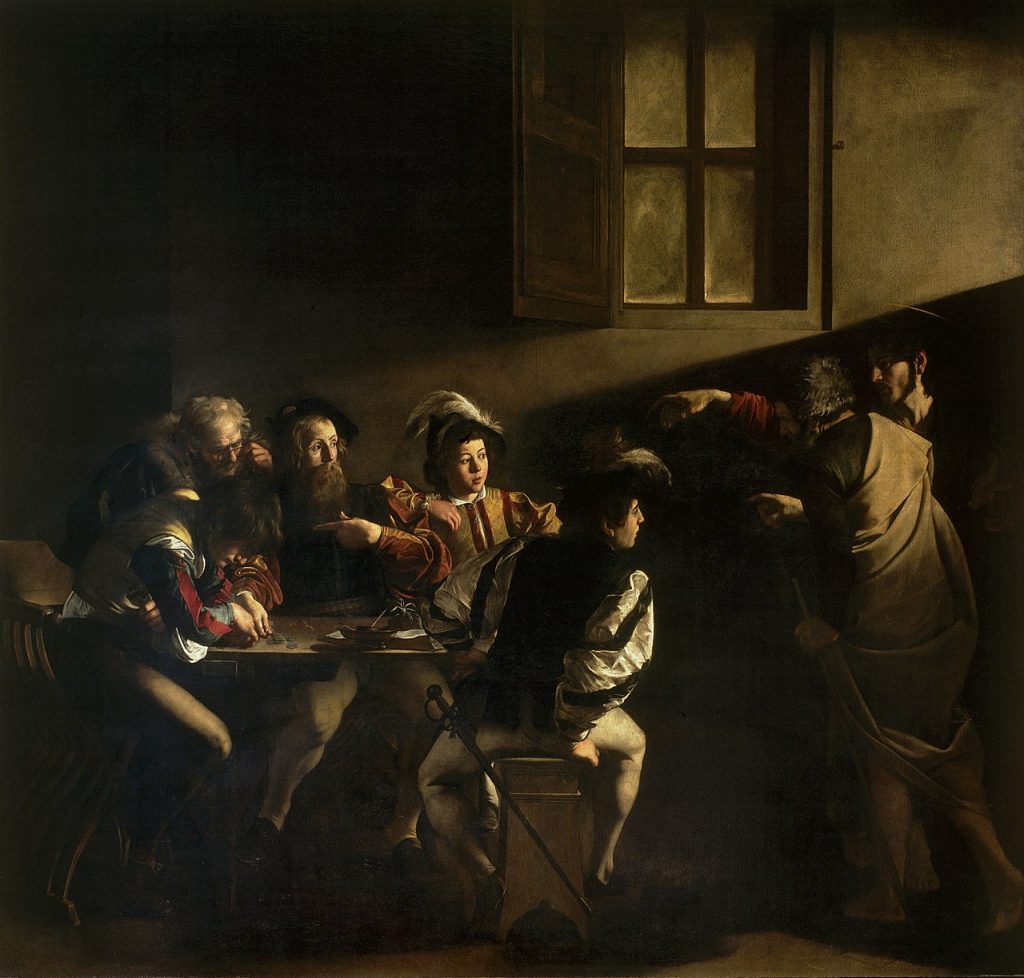
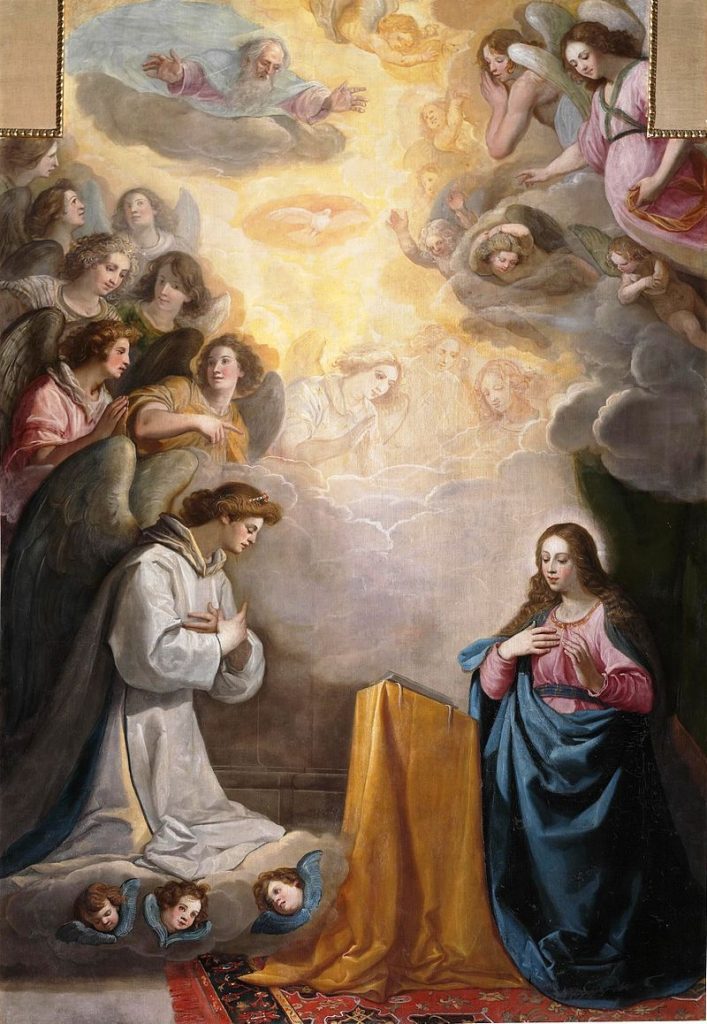
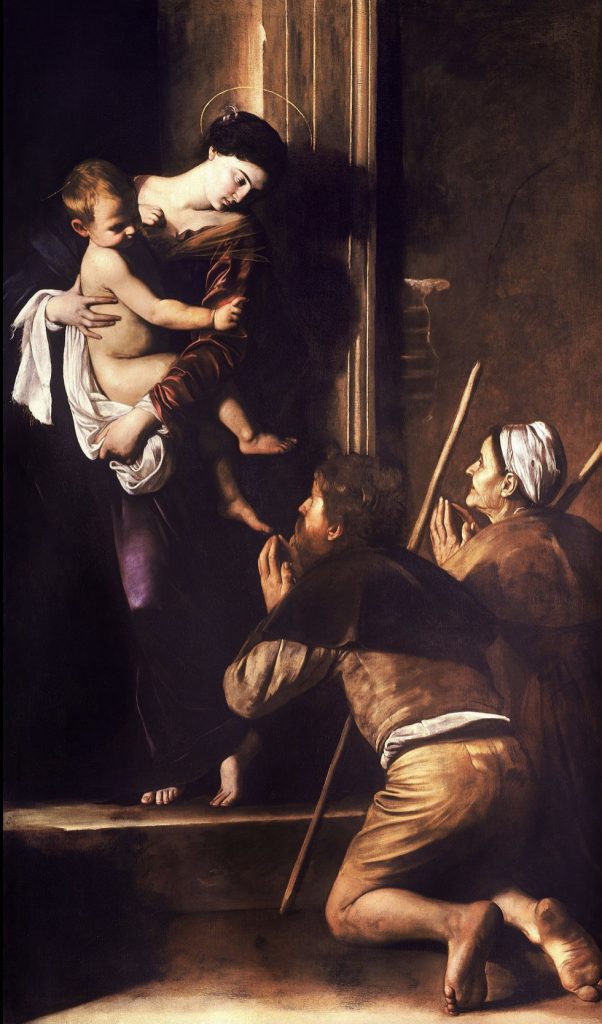
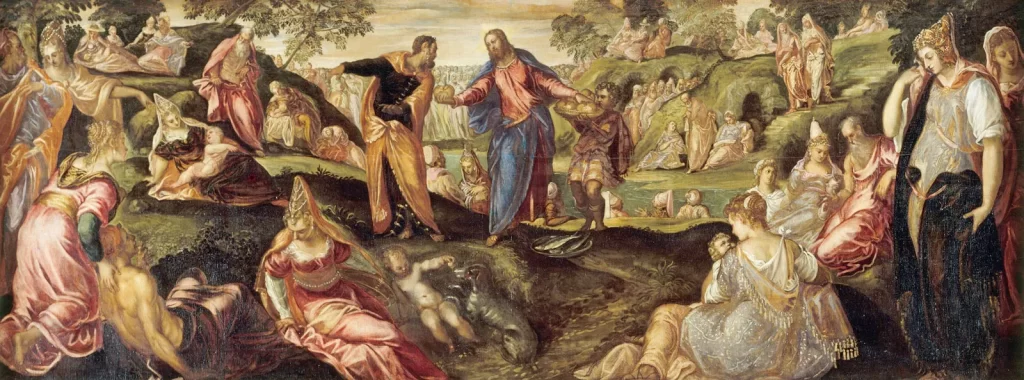
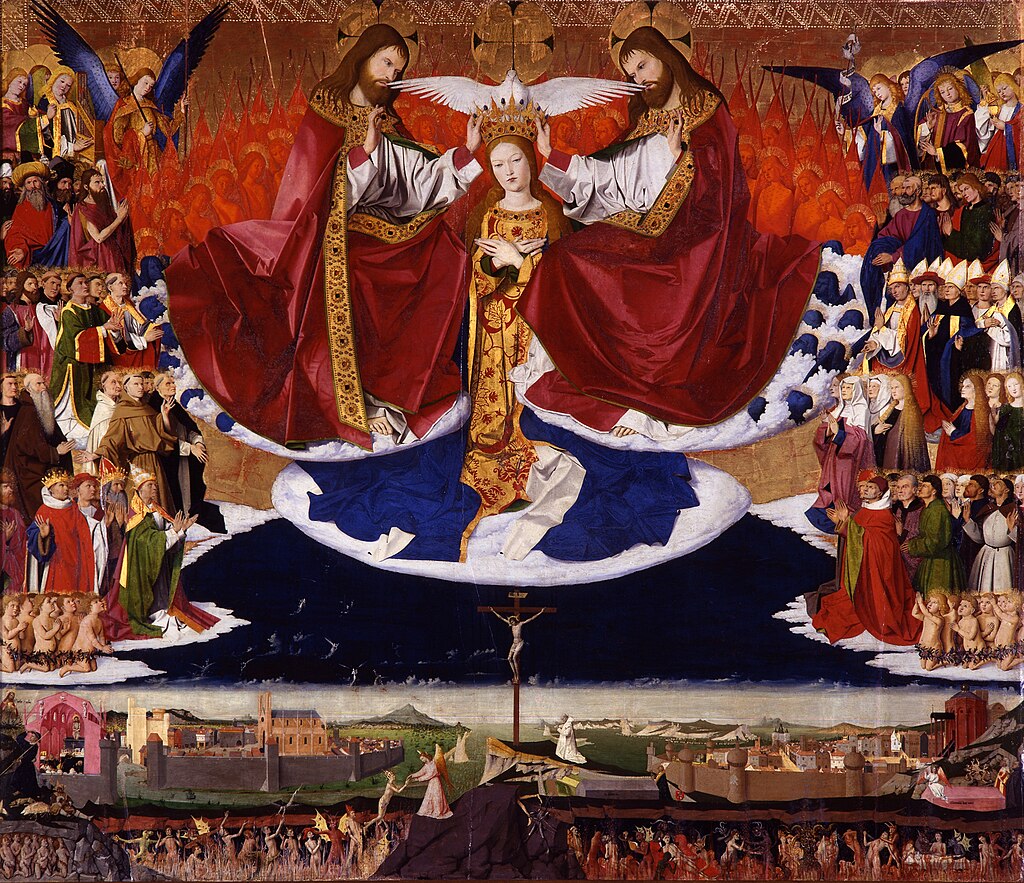
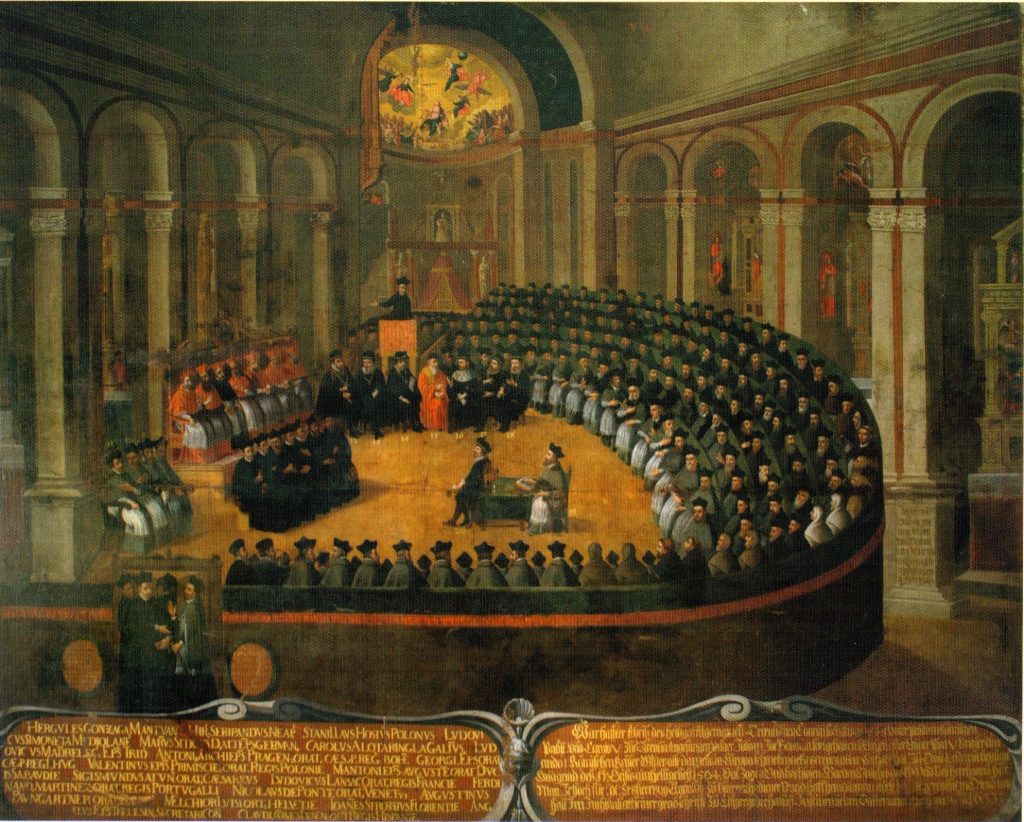
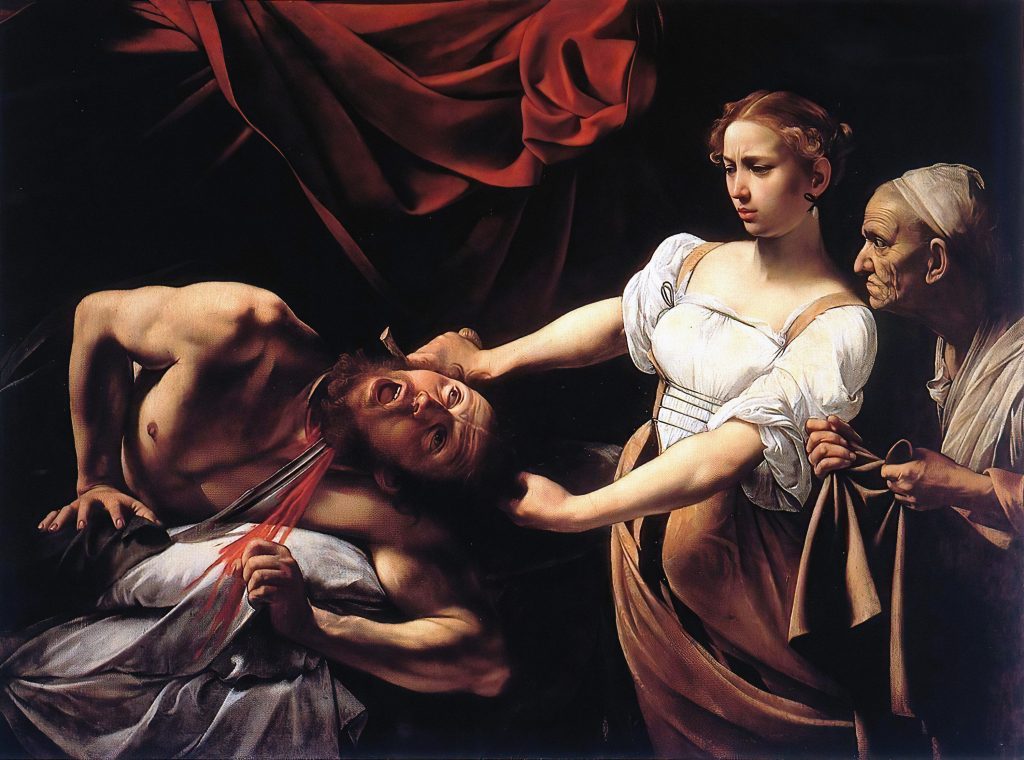
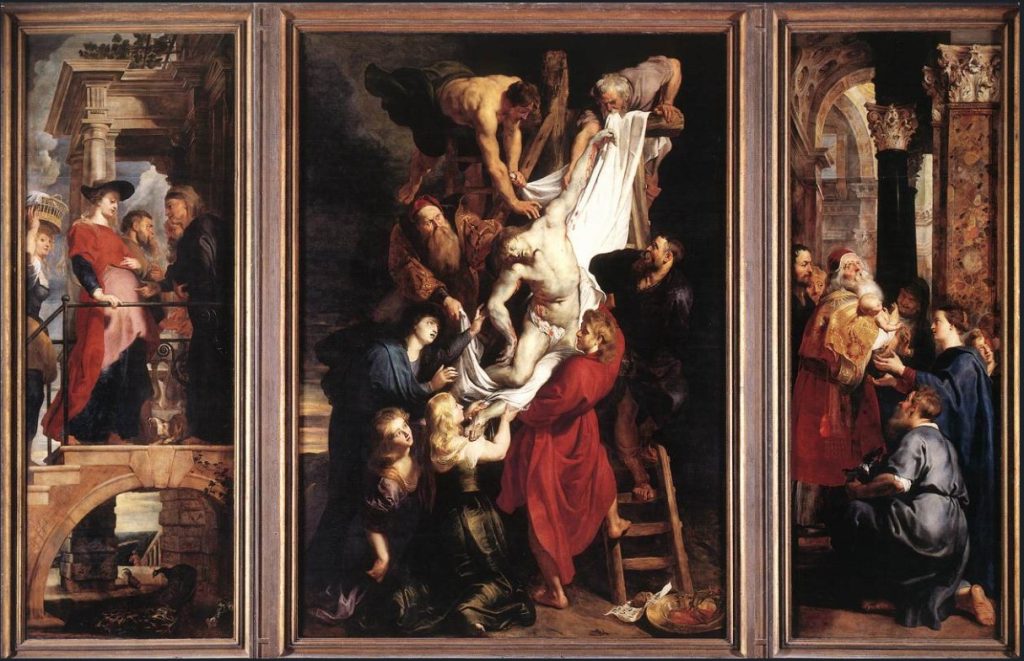
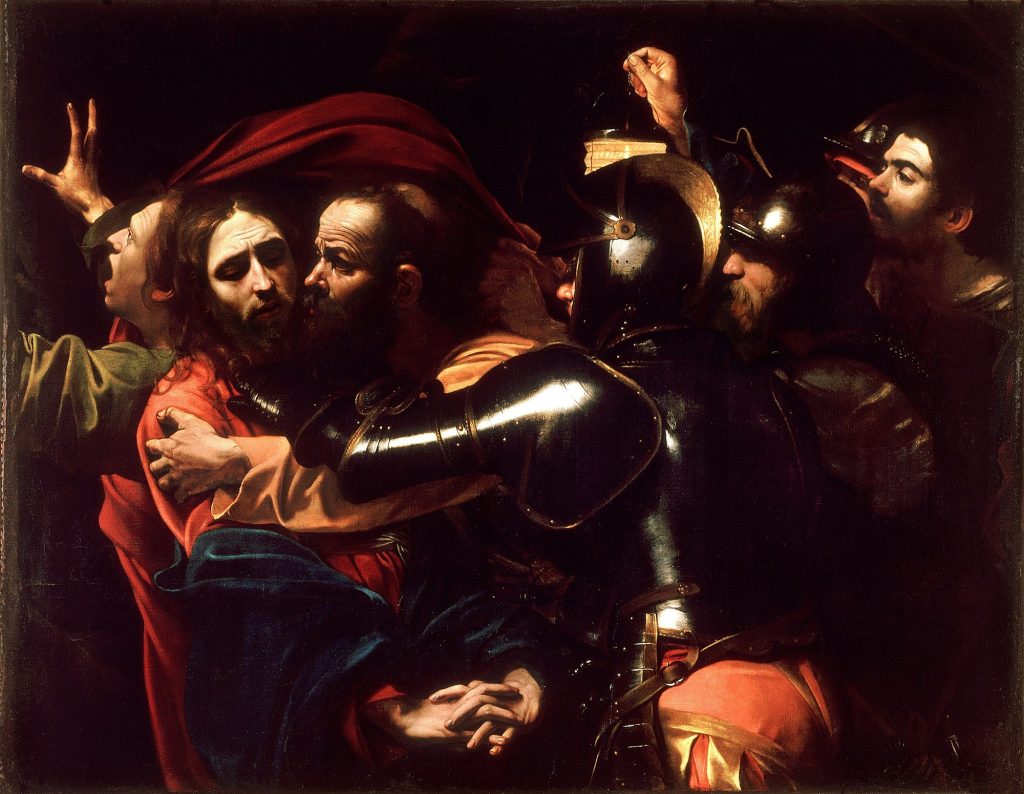
The artworks in the Vatican, particularly those created during the period of the Council of Trent, reflect the influence of this pivotal event in the history of the Catholic Church. The Council of Trent, convened between 1545 and 1563, was a response to the Protestant Reformation and aimed to address doctrinal issues, reform the Church, and reaffirm Catholic teachings.
During this time, the Church sought to counter Protestant criticisms of religious art and reaffirm the role of art in promoting Catholic doctrine and spirituality. As a result, many artworks commissioned for the Vatican during and after the Council of Trent were intended to convey orthodox Catholic theology and counter Protestant iconoclasm.
One of the key concerns addressed by the Council of Trent was the use of religious imagery in art. While the Protestant Reformers criticized the veneration of religious images as idolatrous, the Catholic Church defended the use of art as a means of fostering piety and devotion among the faithful. As a result, artworks in the Vatican often depicted biblical scenes, saints, and religious themes in a manner that was both aesthetically pleasing and doctrinally sound.
The emphasis on clarity and realism in religious art, known as the “moralizing style,” became prevalent during the Counter-Reformation period. Artists sought to communicate religious truths in a direct and accessible manner, using vivid colors, naturalistic details, and dramatic compositions to engage the viewer emotionally and spiritually.
One of the most famous examples of religious art from this period is Michelangelo’s fresco painting of The Last Judgment in the Sistine Chapel. Completed in 1541, this monumental work depicts the Second Coming of Christ and the final judgment of souls, conveying the Church’s teachings on divine justice, redemption, and salvation. The dynamic composition and powerful imagery of The Last Judgment exemplify the Baroque style that emerged during the Counter-Reformation, characterized by its emotional intensity and theatricality.
Similarly, Raphael’s Stanze di Raffaello, or Raphael Rooms, in the Vatican Palace, feature a series of frescoes that celebrate the glory of the papacy and the triumph of the Catholic Church. These paintings, executed between 1508 and 1524, reflect the humanist ideals of the Renaissance while also conveying the spiritual values of the Catholic faith. Scenes such as The School of Athens and The Disputation of the Holy Sacrament convey theological truths and affirm the authority of the Church as the arbiter of divine revelation.
The artworks in the Vatican created during the Council of Trent reflect the Catholic Church’s response to the challenges posed by the Protestant Reformation. Through their rich symbolism, theological significance, and artistic excellence, these works serve as enduring testaments to the enduring power of faith and the transformative potential of religious art.
Shayne Heffernan


